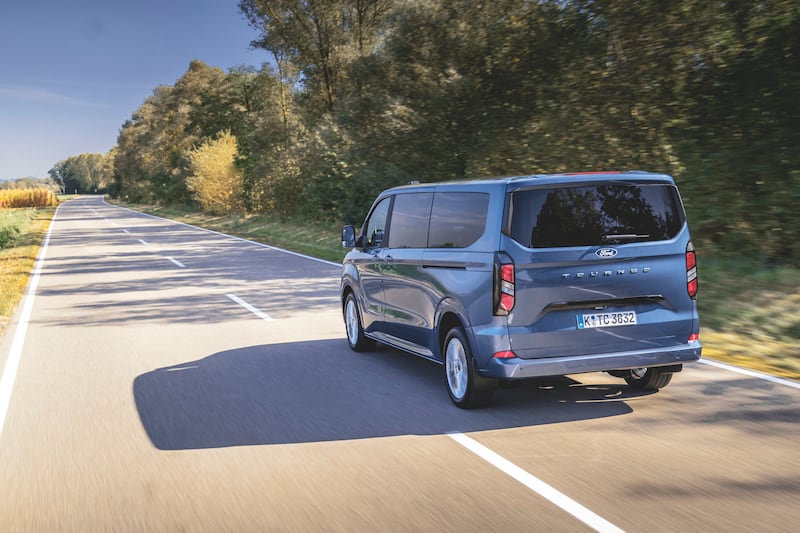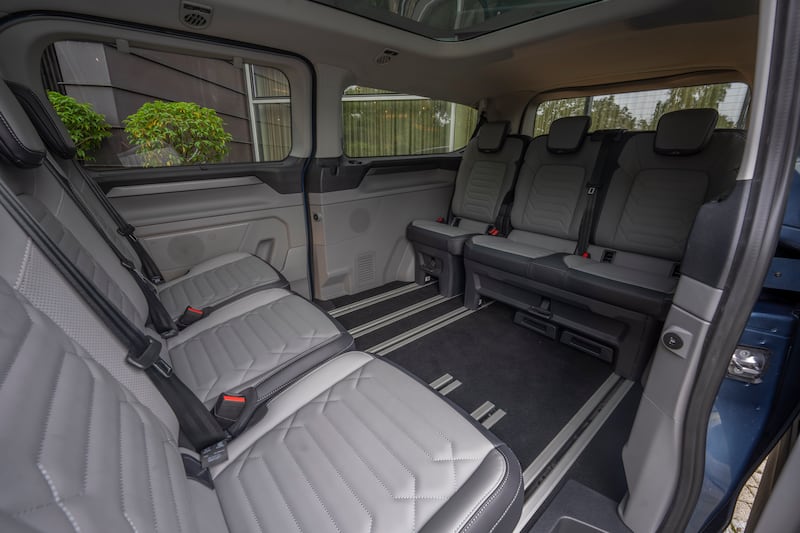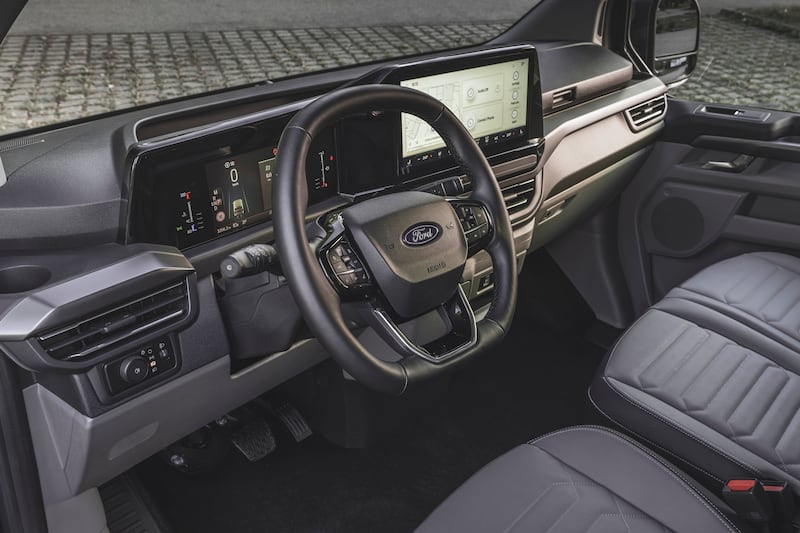Ford’s late and lamented head of engineering, Richard Parry-Jones, used to reckon that the first few metres of driving a car told you a huge percentage about whether or not you’d like it. The creator of the original 1993 Mondeo and 1998 Focus – landmark cars, both – Parry-Jones thusly used to put great store on tactility, from the initial touchpoints of opening the door handle and sitting on the seat, to how the steering and steering wheel feel in your hands as you pull away on those all-important first turns of the crankshaft.
That instant-appeal became Ford’s stock-in-trade; cars that rewarded truly keen drivers, and which the more oblivious still enjoyed driving even if they couldn’t quite explain why. That advantage has been somewhat eroded in recent years, but here is a new Ford that almost perfectly encapsulates the Gospel of Richard. And it’s a van.
Well, sort of. This is the new Tourneo Custom, but, fancier badges aside, it’s really the new Ford Transit Custom. Long a best-seller and a benchmark for anyone else wanting to create and sell a hard-working panel van, the Transit has been entirely renewed for this, the fifth-generation (by our count – doesn’t include the little-seen Germany-only Taunus Transit of 1954) model.
Underneath is an entirely new platform. It’s stiffer and lighter (by 30 per cent and 100kg, respectively) and capable of handling front-wheel drive, four-wheel drive, diesel, petrol plug-in hybrid, or a new fully-electric Transit EV. That, the only rear-drive version, arrives in the summer of 2024, with a 64kWh battery and a claimed range of up to 337km, with power outputs of up to 217hp. It’ll all be shared with Volkswagen’s incoming new Transporter van, and both vehicles will be built in Ford’s Otosan plant in Turkey.
READ MORE

What, then, is a Tourneo? It’s basically a posh Transit that’s focused on carrying people and luggage, rather than sheets of 2x4 and boxes of hammers. In some ways, it’s a glorified airport shuttle (although the related Transit Custom Kombi, with seating for up to 14, is better suited for that role) but it’s also the last surviving revenant of the once-mighty MPV species. Vans with seats have now filled the space once occupied by the cars we accused of being vans with seats. The irony is palpable.

To turn it into a Tourneo Custom, Ford fits a more luxuriously appointed rear cabin where the 5.8-cubic metre loadspace sits in the van. There are six seats, mounted on rails, which slide back and forth, or even swivel around by 180 degrees if you want the full mobile executive networking sessions feel.
[ DS 7 is a perfectly decent car but hasn’t found its essenceOpens in new window ]
The rear cabin is very comfortable, and the optional big glass roof makes it feel very bright and airy. The twin sliding side doors make it exceptionally easy to get in and out, even in narrow parking space (handy, given the Tourneo’s two-metre width) and there’s a vast 1,300-litre boot behind, even with all the six rear seats filled. There are also USB sockets for all, and rear heating and air conditioning controls.

Up front, there are three seats (including the driver) but the front passenger seats are fixed in one position, so won’t be comfortable for everyone. The driver’s seat is good, though, and you instantly notice the way the squared-off steering wheel feels good to hold. The ghost of Parry-Jones very much in the machine, there.
The cabin is impressive in some ways – standard big digital screens for instruments and infotainment, great on-screen software, wireless connectivity, loads of practical storage, terrific view out – but less so in others – the plastics are all van-spec, so will feel pretty cheap by the standards of the Tourneo’s likely chunky price tag (it’s not priced for Ireland just yet but the Transit Custom range starts at €39,900.)
The PHEV and EV won’t be around until next year, so we had a 170hp front-drive 2.0-litre diesel version to try out at Ford’s German-based launch event for both the Transit and Tourneo. The basic Transit we drove on the same day actually had a six-speed manual gearbox which – no joke – had a terrific gearshift quality, and which I’m pretty sure was using a wonderfully tactile mid-1990s Mondeo gear lever. The Tourneo test car, in pricey Titanium spec, had an eight-speed automatic with the gear selector up on the steering column.
[ Subaru Solterra brings the brand to the EV market but can it retain its DNA?Opens in new window ]
While it’s not quite as satisfyingly touchy-feely as the manual, the automatic Tourneo does that Parry-Jones thing of feeling really brilliant in the first few metres. The diesel engine is kept well quiet, the steering feels wonderfully slick and free from friction or excessive weight, and the way the Tourneo first moves through a corner, or over bumps, feels hugely sophisticated, and not just by van standards. Some cars don’t feel this impressive, and it’s no doubt helped by the new platform’s independent semi-trailing arm rear suspension. No more beam axle and leaf springs around here.
Through some challenging corners, the Tourneo drives almost like a big, tall, long, hot hatch – aside from the fact that it doesn’t have all that much performance, in spite of 390Nm of torque. As a way of enjoyably driving down a twisty road, though, the Tourneo is genuinely surprising in how well its responds. It’s even fairly economical – we averaged 7.5 litres per 100km, including a stint spent at v-max (about 170km/h before the aerodynamics put a top to proceedings) on a nearby autobahn.
There are some very neat touches, too. That steering wheel can, optionally, flip upwards to a horizontal position to form an ersatz table (there’s even a plastic insert for the centre if you need it) and there’s masses of oddment stowage thanks to the fact that the passenger side airbag has been moved to the roof.
So, yes, it’s a van. A van with windows and extra seats, and one that’s going to be seriously not cheap to buy. But it’s also a truly, hugely, practical family machine with, eventually, a broad choice of engines and powertrains that will allow you to go fully electric. Most of all, though, it’s a Ford; a Ford in the grand tradition of the 1990s when Richard Parry-Jones, ably assisted by no less than Jackie Stewart, thought that so-called ordinary family cars should steer and handle better than they ever had before. Some traditions are worth keeping.













